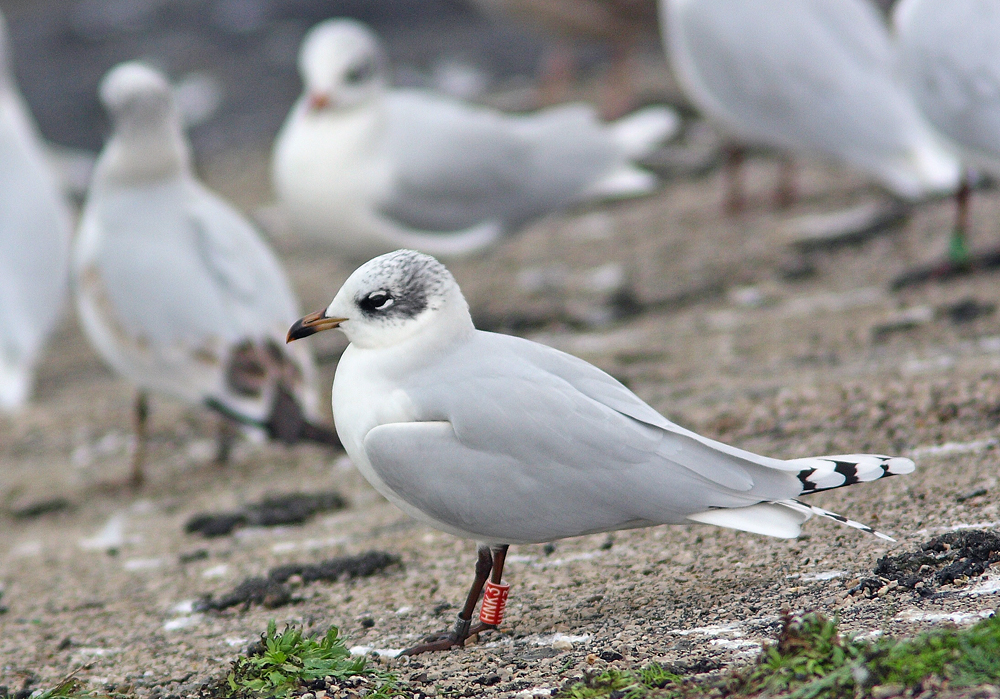 Mediterranean Gull (L. melanocephalus)
Mediterranean Gull (L. melanocephalus)
(last update:
Mediterranean Gull 2cy HNK3 November 30 2009, Le Portel / Boulogne-sur-Mer, NW France. Picture: Jean-Michel Sauvage.
Ringing data: ringed as pullus in 2008 at Rétszilas, Fejér in Hungary (46.51'N 18.34'E). Distance: 1318 Km.
Life history:
2008-09-29 7 81 Vierville-sur-Mer (Omaha Beach), France (FR01)
49.22'N 00.54'W (Gilbert V)
2009-05-21 7 81 Ammersee, Germany (DEA-) 48.00'N 11.07'E (Christian H)
2009-07-26 7 81 Le Portel, France (FR07) 50.42'N 01.34'E Camille D
2009-09-18 7 81 Wissant, France (FR07) 50.54'N 01.41'E Camille D
2009-11-30 7 81 Le Portel, France (FR07) 50.42'N 01.34'E (Jean-Michel S)
From May to September, the first complete moult takes place, into so-called "second winter" plumage. The head pattern resembles the pattern in first winter birds, with a blackish mask behind the eye. The mantle, scapulars, tertials and all wing-coverts are replaced with plain pearl-grey feathers. The secondaries are as in adult birds, pale grey with a white tip. The second generation primaries are much paler than the first juvenile primaries, but still not nearly all-white as in adults. After finishing this complete moult a 2cy Mediterranean Gull in autumn has a diagnostic wing-tip pattern with a variable amount of black on P5-P10. P5 has only a small black sub-terminal spot, becoming gradually larger on the outer primaries as the black patch "eats up" the white along the edge of the outer-web, most prominent on P9-P10. In some birds, the outer greater primary coverts and rarely the alula coverts may show dark markings as well. The bill is orangey-red with a dark sub-terminal band. The legs are dull red or more obvious orangey-red. As with 2cy birds there is individual variation in this age group but it is less pronounced and mostly involves the amount of black in the outer primaries and the colour of the bill.
